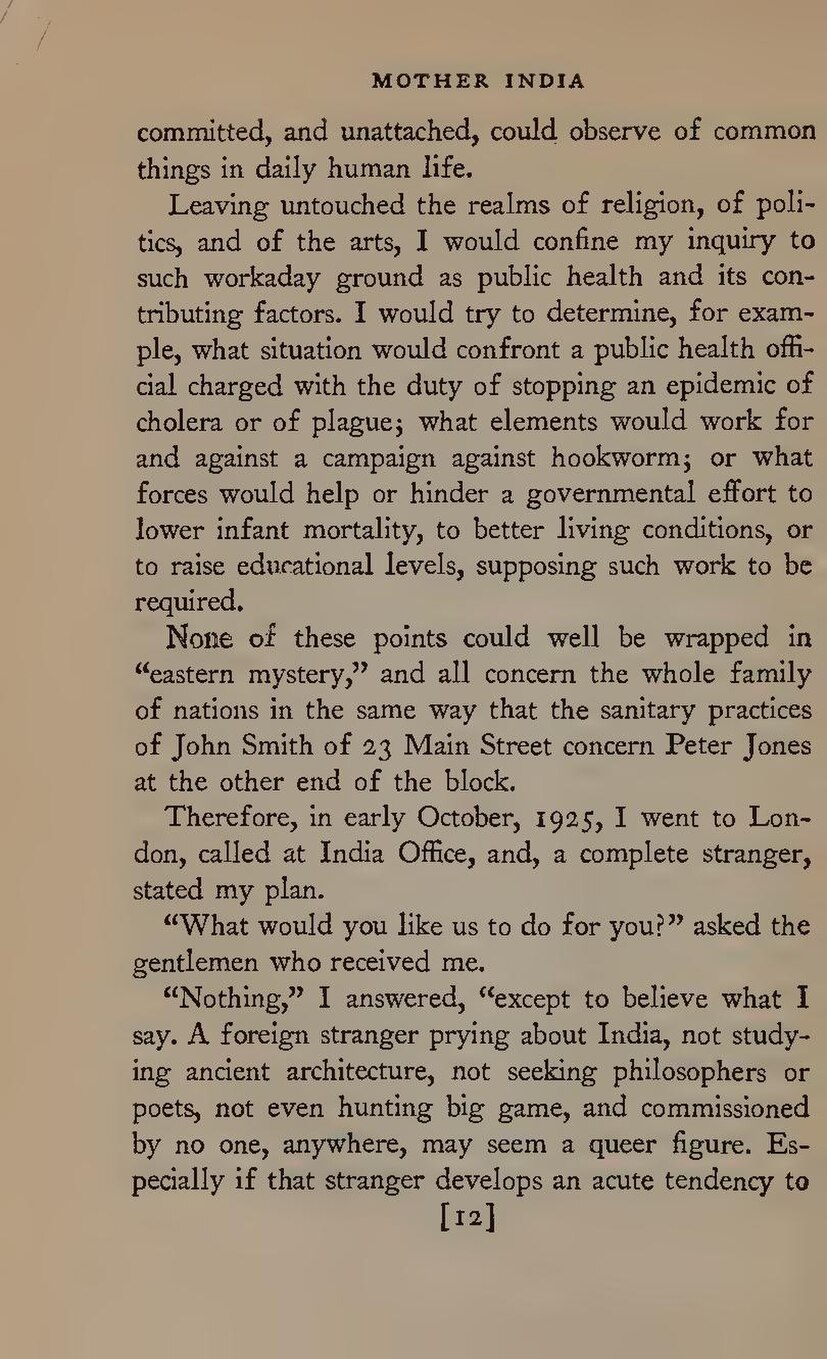MOTHER INDIA
committed, and unattached, could observe of common things in daily human life.
Leaving untouched the realms of religion, of politics, and of the arts, I would confine my inquiry to such workaday ground as public health and its contributing factors. I would try to determine, for example, what situation would confront a public health official charged with the duty of stopping an epidemic of cholera or of plague; what elements would work for and against a campaign against hookworm; or what forces would help or hinder a governmental effort to lower infant mortality, to better living conditions, or to raise educational levels, supposing such work to be required.
None of these points could well be wrapped in “eastern mystery,” and all concern the whole family of nations in the same way that the sanitary practices of John Smith of 23 Main Street concern Peter Jones at the other end of the block.
Therefore, in early October, 1925, I went to London, called at India Office, and, a complete stranger, stated my plan.
“What would you like us to do for you?” asked the gentlemen who received me.
“Nothing,” I answered, “except to believe what I say. A foreign stranger prying about India, not studying ancient architecture, not seeking philosophers or poets, not even hunting big game, and commissioned by no one, anywhere, may seem a queer figure. Especially if that stranger develops an acute tendency to
